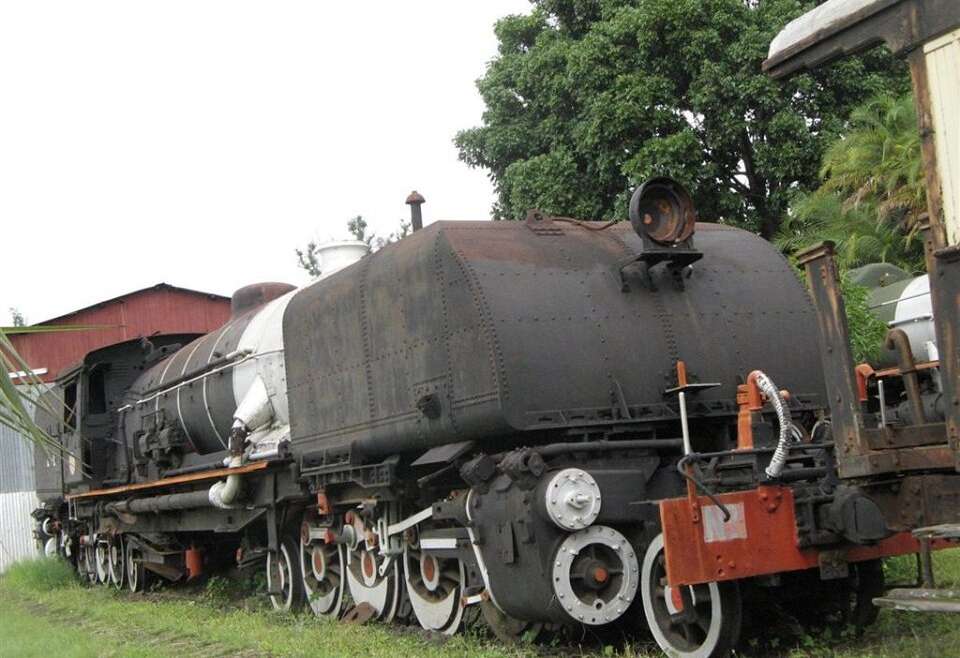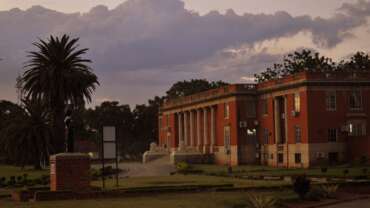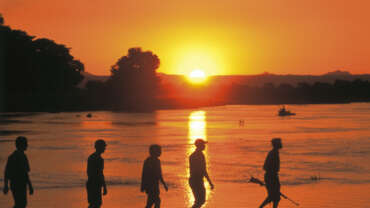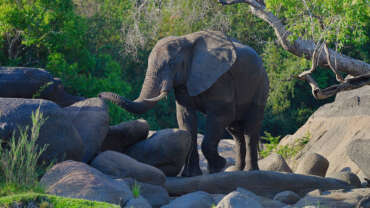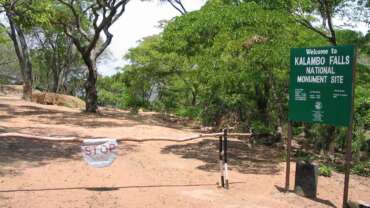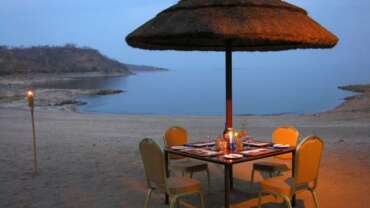Experiences in Zambia
A rich history of different cultures that date all the way back to the first human fossil ever discovered in Africa, in 1921, proves that archaic humans were present in Zambia at least 200 000 years ago. Followed by the Khoisan about 36 000 years ago, to European colonisation, four different kingdoms and many religions – Zambia has a plethora of landmarks, museums and history to share.
From ancient cave paintings to the hustle-and-bustle of modern Lusaka, the grandeur of Shiwa Ng’andu to the infamous slave tree – Zambia’s monuments and heritage sites are as diverse as its history.
List of Historic Sites
These are not declared national monuments but are probably on the larger NHCC list of historic sites. It is an informal and incomplete list of sites — please let me know if there are others not mentioned here.
– Chilubula Mission, Kayembi — the first mission of the White Fathers in the territory built 1895 by Father Joseph Dupont, known as ‘Moto Moto’, it features a large church and well-preserved buildings.
– Otto Beit Bridge, Chirundu — 1939, first modern suspension bridge with parallel cables built outside the USA (shared with Zimbabwe).
– High Court, Livingstone — built in 1910 to coincide with the visit of the Duke and Duchess of Connaught
Broken Hill Mine, Kabwe — one of the first mines in Zambia (1906) and site of the Broken Hill Man fossil find commemorated by a memorial at the municipal offices.
– Kilwa Island, Lake Mweru — site of 19th Century slave traders’ stockade.
– Lwimbe Petroglyphs —about 15 km west of Kasama.
– Girls Boarding School, Mbereshi — 1915, first African girls’ school in the country, now a mission house.
– Mulungushi Rock, Kabwe — since 1960, site of independence movement conferences.
– Mumbwa, the first Copperbelt commercial copper mines in Zambia were the Sable Antelope mine and Hippo mine in Mumbwa, now heritage sites. North-Western Hotel, Livingstone — built 1909 by ‘Mopane’ Clarke.
– Saint Andrews Church, Livingstone — built 1910-11 in memory of David Livingstone and still in use.
– Shiwa House — ‘manor house’ built in 1922 by Sir Stewart Gore-Browne at his Shiwa Ngandu estate.
– Victoria Falls Bridge, Livingstone — 1905, first major bridge and first railway (shared with Zimbabwe)
Natural Monuments
Lunsemfwa Wonder Gorge and Bell Point: Mkushi District at the confluence of the Lunsemfwa and Mkushi Rivers at 14°39′ S 29°07′ E. About 75 km east-southeast of Kabwe, Zambia, the Lunsemfwa River cuts a 500m deep gash, known as The Wonder Gorge, through the lip of the Muchinga Escarpment (viewed from Bell’s Point). The antenna atop the Taipei 101 skyscraper, the world’s tallest building, would just protrude above the rim of this gorge.
- – Chipoma Falls on the Chimanabuwi River, 24 km SSW of Chinsali at 10°46′ S 32°01′ E.
– Chirundu Fossil Forest — 50,000-year-old fossil trees, 21 km west of Chirundu at 16°02′ S 28°40′ E. Just off the main Lusaka – Chirundu road, not far from Chirundu, are fossil trees belonging to the Karoo period and are about 50,000 years old. The hills here are covered in what at first glance look like large cylindrical columns of rock.
– Chisimba Falls on the Luombe River 7.2 km from Chilubula Mission in Kasama District. Hippo Pool, Chingola on the Kafue River.
– Kalambo Falls, Mbala District — falls and archaeological site of early human habitation (the falls is shared with Tanzania.
– Kundabwika Falls on the Kalungwishi River in Kaputa District at 9°13′ S 29°19′ E
– Kundalila Falls on the Kaombe River, 12.8 km SE of Kanona in Serenje District.
– Lake Chirengwa (Sunken Lake) 14 km E of Ndola at 12°58′ S 28°45′ E.
– Lake Kashiba SW of Luanshya: a 100 m deep sunken lake at 13°27’S, 27°56’E.
– Lumangwe Falls on the Kalungwishi River between Mporokoso and
– Ntumbachushi Falls on the Ngona River, Kawambwa District, at 9°52’S, 28°58’E
– Zambezi Source, Mwinilunga District: source of the Zambezi River and a botanical reserve, part of Zambezi Source National Forest.



